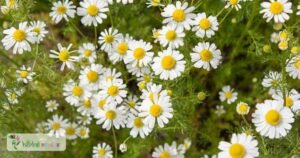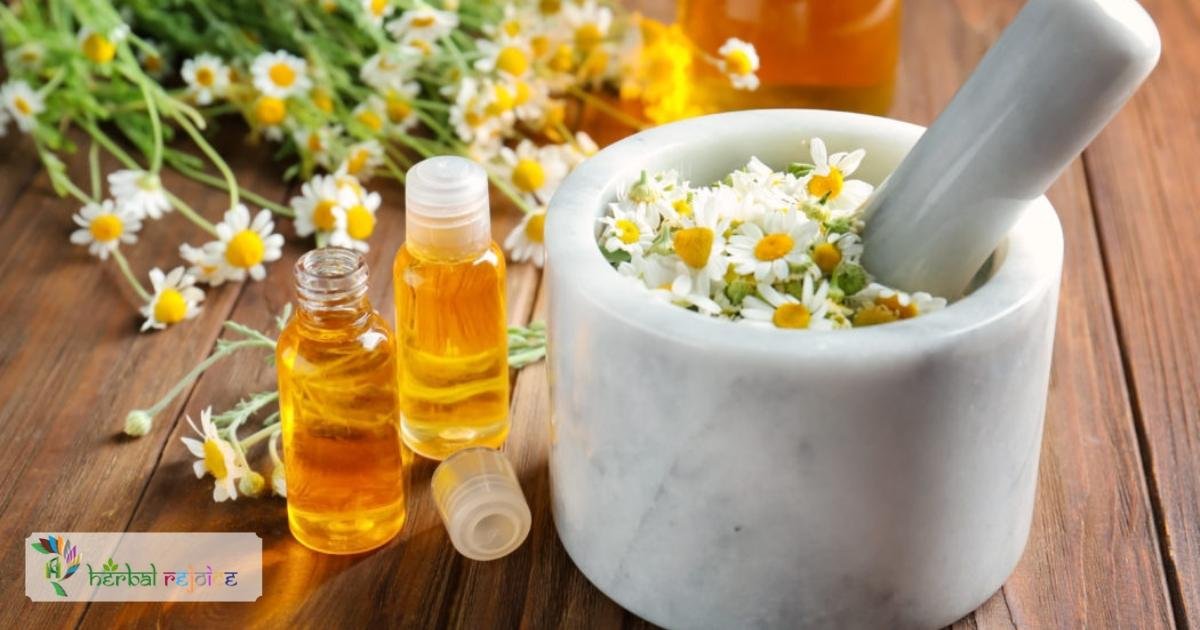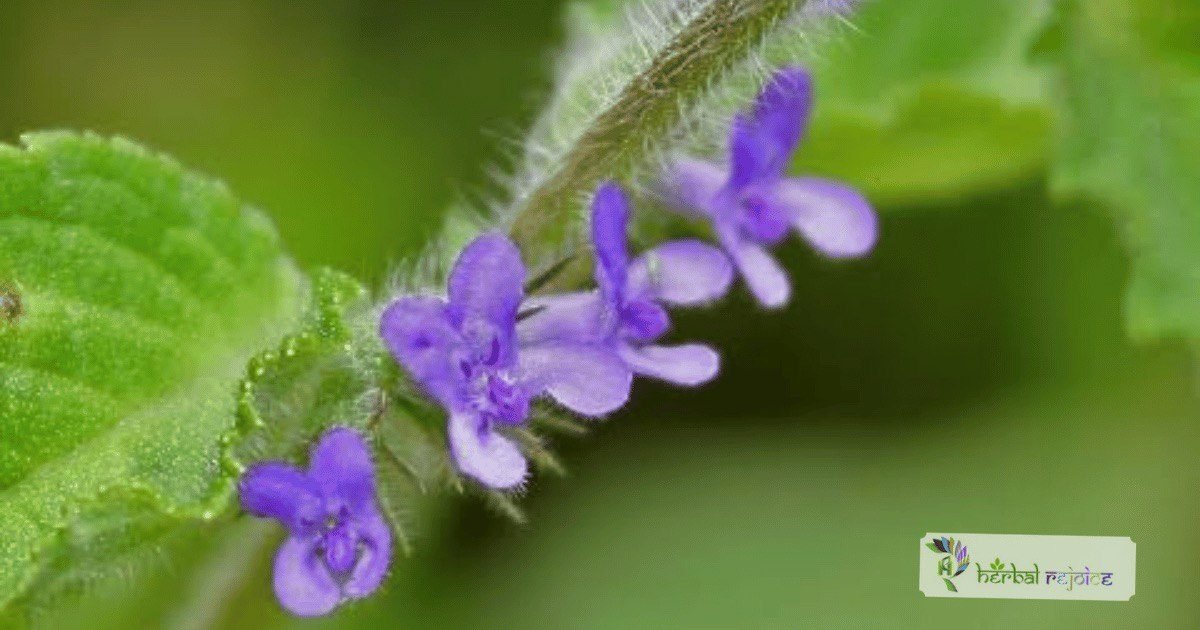Introduction
German Chamomile (Matricaria chamomilla Linn.), also known as Chamomile, is a popular herb native to Europe.
It is also grown in Jammu & Kashmir, Himachal Pradesh, and Uttar Pradesh. In the Unani system of medicine, it is referred to as Baabunaa.
It is used for the treatment of inflammatory diseases of the gastrointestinal tract and gastrointestinal spasms, mucous membrane and Ano-genital inflammation, as well as bacterial skin diseases.
German Chamomile – An Anticonvulsant Miracle

Traditional Uses of German Chamomile
German Chamomile is known for its various medicinal properties. It is a sedative and anticonvulsant, making it useful in soothing and calming the nerves. It also acts as a carminative and antispasmodic, helping to relieve gastrointestinal spasms.
Additionally, it has analgesic, anti-inflammatory, and antiseptic properties. It is often compared to Roman Chamomile (Anthemis nobilis L.), which has similar medicinal benefits.
The German Commission E and The British Herbal Compendium recognize its anti-inflammatory and antispasmodic properties in these applications. The British Herbal Pharmacopoeia also confirms its effectiveness as an anti-inflammatory and antispasmodic agent.
Chemical Constituents of German Chamomile
The flowers of German Chamomile contain a volatile oil, which can be extracted and used for medicinal purposes.
The oil contains various compounds including alpha-bisabolol, chamazulene, guiazuline, matricine, flavonoids (apigenin, luteolin) and their glycosides (patuletin, quercetin), spiroethers, coumarins, and polysaccharides.
The volatile oil can also be used to make herbal tea, which is commonly used for coughs, colds, and to promote the flow of gastric secretions and bile.
Key Components and Their Benefits
Chamazulene, a compound found in German Chamomile, is responsible for its anti-inflammatory activity. Matricine and (-)-alpha-bisabolol also exhibit anti-inflammatory and analgesic properties.
(-)-alpha-bisabolol has been shown to have a healing effect on burns and exhibits ulceroprotective activity. Spiroethers and apigenin have a spasmolytic effect similar to papaverine.
The polysaccharides found in German Chamomile are immunostimulating and activate macrophages and B lymphocytes, making them useful in wound healing.
Anticonvulsant Property of German Chamomile
In addition to its various medicinal properties, German Chamomile has also shown promising results in preclinical studies.
A crude aqueous extract of the plant has been found to delay the onset of convulsions and reduce mortality rates caused by picrotoxin.
Conclusion
In conclusion, German Chamomile (Matricaria chamomilla Linn.) is a versatile herb with a wide range of medicinal properties. It is commonly used for its sedative, anticonvulsant, carminative, antispasmodic, analgesic, anti-inflammatory, and antiseptic effects.
The presence of compounds such as chamazulene, matricine, (-)-alpha-bisabolol, and polysaccharides contribute to its therapeutic effects. It can be taken internally or used externally for various conditions, including gastrointestinal disorders and skin inflammation.
Frequently Asked Questions (FAQs)
What is German Chamomile?
German Chamomile, also known as Chamomile, is an herb native to Europe and is grown in certain regions of India. It is referred to as Baabunaa in the Unani system of medicine.
What are the medicinal properties of German Chamomile?
German Chamomile is known for its sedative, anticonvulsant, carminative, antispasmodic, analgesic, anti-inflammatory, and antiseptic properties.
How does German Chamomile help with soothing the nerves?
German Chamomile acts as a sedative and anticonvulsant, making it useful in soothing and calming the nerves.
What conditions can German Chamomile be used for?
German Chamomile can be used for the treatment of inflammatory diseases of the gastrointestinal tract, gastrointestinal spasms, skin inflammation, mucous membrane inflammation, ano-genital inflammation, and bacterial skin diseases.
How is German Chamomile taken internally?
German Chamomile can be taken internally for conditions such as gastrointestinal diseases by using it as a tea or in the form of an extract.
What are the external applications of German Chamomile?
German Chamomile can be applied externally for the treatment of skin inflammation, mucous membrane inflammation, and ano-genital inflammation.
What are the recognized properties of German Chamomile by The German Commission E and The British Herbal Compendium?
The German Commission E and The British Herbal Compendium recognize the anti-inflammatory and antispasmodic properties of German Chamomile in the treatment of various conditions.
What compounds are found in the flowers of German Chamomile?
The flowers of German Chamomile contain a volatile oil, which contains compounds such as alpha-bisabolol, chamazulene, guiazuline, matricine, flavonoids (apigenin, luteolin) and their glycosides (patuletin, quercetin), spiroethers, coumarins, and polysaccharides.
What can the volatile oil of German Chamomile be used for?
The volatile oil of German Chamomile can be used for medicinal purposes and to make herbal tea, which is commonly used for coughs, colds, and to promote gastric secretions and bile flow.
What is the role of chamazulene in German Chamomile?
Chamazulene, a compound found in German Chamomile, is responsible for its anti-inflammatory activity.
What are the anti-inflammatory and analgesic properties of German Chamomile?
Matricine and (-)-alpha-bisabolol also exhibit anti-inflammatory and analgesic properties.
Can German Chamomile heal burns?
(-)-alpha-bisabolol, a compound found in German Chamomile, has been shown to have a healing effect on burns.
What effect does German Chamomile have on spasms?
German Chamomile contains compounds such as spiroethers and apigenin that have a spasmolytic effect similar to papaverine.
How do the polysaccharides in German Chamomile contribute to its effects?
The polysaccharides found in German Chamomile are immunostimulating and activate immune cells, making them useful in wound healing.
Have there been any preclinical studies on German Chamomile?
Yes, a crude aqueous extract of German Chamomile has shown promising results in delaying the onset of convulsions and reducing mortality rates caused by picrotoxin.
Can German Chamomile be used for other conditions not mentioned?
German Chamomile has been traditionally used for other conditions and further research is needed to explore its potential in clinical settings.
Is German Chamomile the same as Roman Chamomile?
German Chamomile is often compared to Roman Chamomile, as they both have similar medicinal benefits.
Where else is German Chamomile grown?
Apart from Europe, German Chamomile is also grown in Jammu & Kashmir, Himachal Pradesh, and Uttar Pradesh in India.
Is German Chamomile safe to use?
German Chamomile is generally considered safe to use when used as directed.





